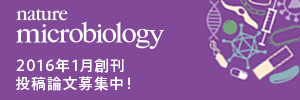PA-004:Impact of migratory birds on the seasonal dynamics of pathogenic bacteria population in a freshwater lake
1Division of Env Eng, Graduate School of Eng, Hokkaido University, 2Transdisciplinary Research Integration Center, NiPR, 3Department of Soil, Water, and Climate; and BTI, U of Minnesota
Migratory birds can carry and spread pathogens and other bacteria to wide areas. However, impact of the migratory birds on freshwater microbial community is not well understood. In this study, we analyzed the microbial community structure and the pathogen concentrations in a freshwater lake ecosystem. Over 60,000 greater white-fronted geese stop over and drop their feces in Lake Miyajima in Hokkaido, Japan, during spring and fall migratory seasons. Water samples were collected from Lake Miyajima monthly from April to November in 2013 and 2014. Temporal dynamics of the microbial community in lake water samples were analyzed by 16S rRNA gene-based PCR amplicon sequencing. In addition, Campylobacter and Arcobacter strains were isolated from the water samples and goose fecal droppings collected in agricultural fields around the lake. Intraspecies diversities within Campylobacter and Arcobacter strains were analyzed by sequencing flaA short variable region. The flaA sequences were compared between strains isolated from water samples and those from fecal droppings to identify the sources of pathogens. Based on the 16S rRNA gene amplicon sequencing analysis, great seasonal variation was observed in the microbial community structure. Concentration of Campylobacter also greatly changed by time, most likely due to the fecal input from migratory geese. This was also supported by the flaA sequence typing of the Campylobacter isolates. In contrast, concentration of Arcobacter was stable throughout the sampling seasons. In addition, no Arcobacter strains were isolated from Geese feces. Identical flaA genotype strains appeared in lake water over months in two years. These results suggested that Arcobacter strains were not originated from geese and could survive or grow in the lake environment. Because Lake Miyajima water is used as irrigation water for the surrounding agricultural fields, occurrence of pathogens in the lake water should call attention.
keywords:seasonal dynamics,pathogenic bacteria population,migratory birds,fecal contamination




